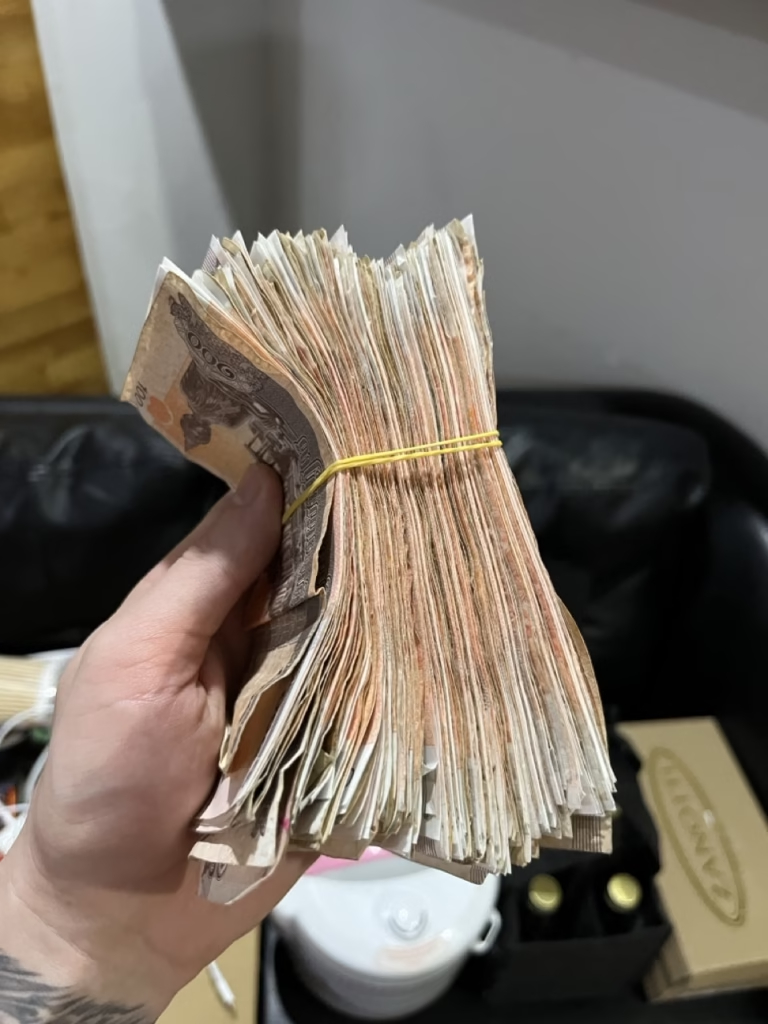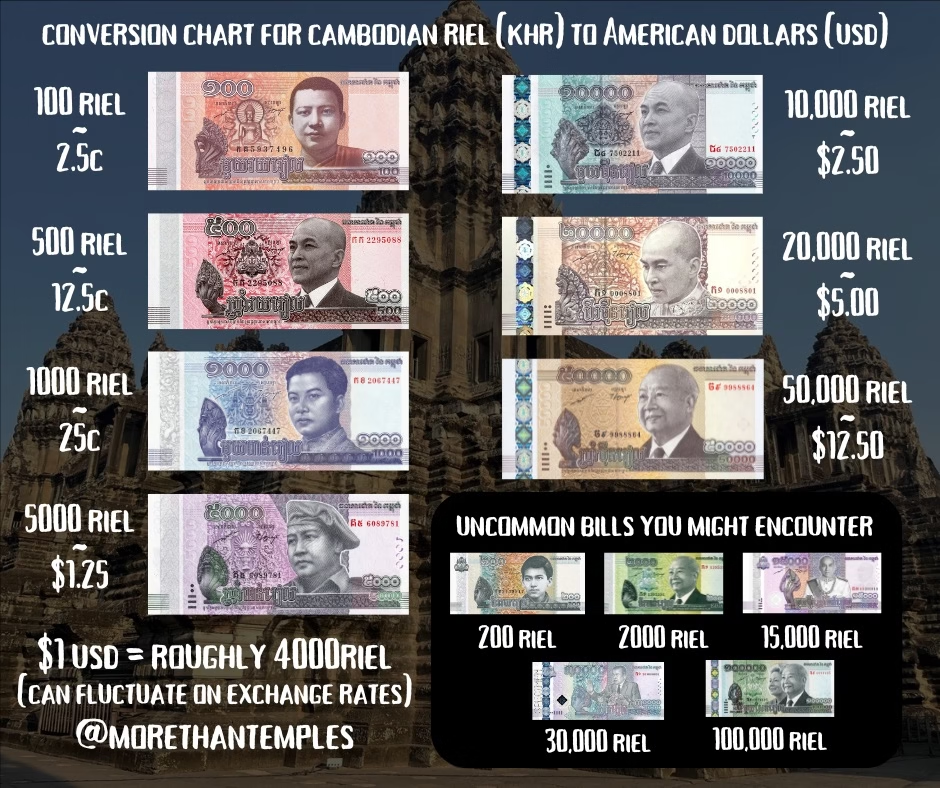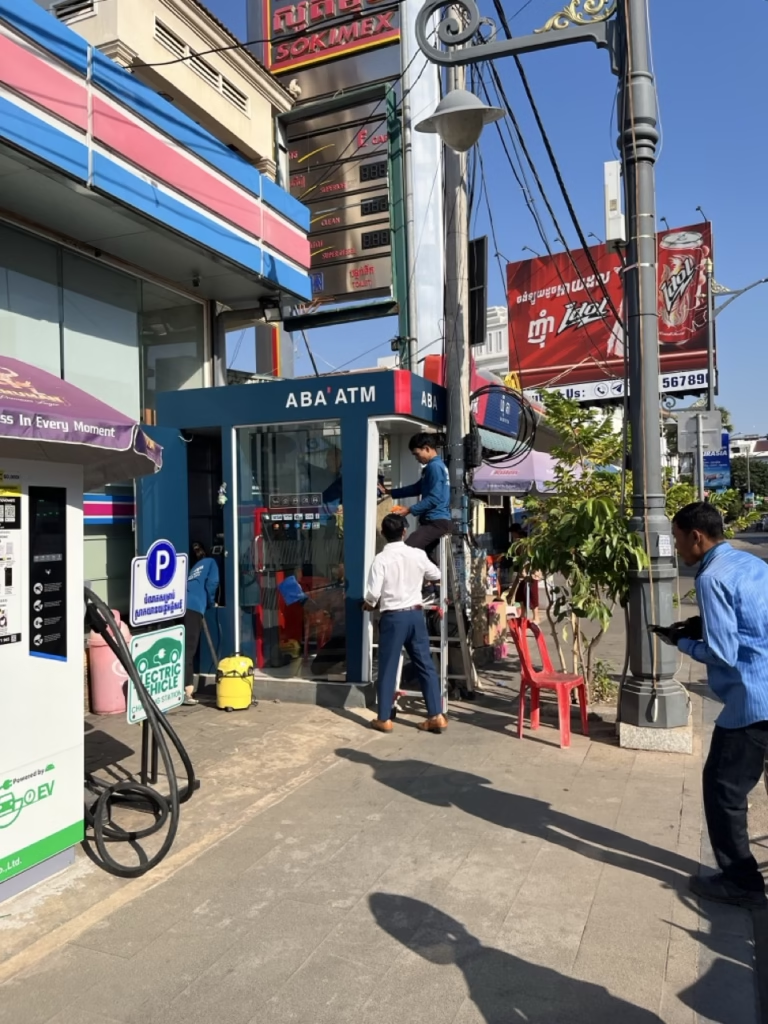Cambodian Currency: What You Need to Know Before You Go
Planning a trip to Cambodia to explore Angkor Wat, relax on the beaches of Sihanoukville, or dive into the street food scene in Phnom Penh? Before you pack your bags, it’s important to understand how Cambodian currency works. Don’t worry! This guide to Cambodian currency will sort you out in no time.
Cambodia has a pretty unique money system that can leave first-time visitors scratching their heads. With two currencies in circulation and a few quirks that might surprise you, it’s important to know what to expect – especially if you want to avoid awkward situations at the checkout or being stuck with cash at the end of your trip that you can’t spend elsewhere.
Scroll down if you’re just looking for a handy conversion chart for USD to Cambodian Currency that you can save to your phone!
What Currency Does Cambodia Use?
Cambodia unofficially operates on a dual currency system, meaning two currencies are commonly used in day-to-day life: the Khmer Riel (KHR), which is the official Cambodian currency, and the United States Dollar (USD).
That’s right – the Cambodian currency you’ll be handling isn’t just Cambodian.
Why Does Cambodia Use the US Dollar?
Although some amounts of USD had been present in Cambodia since the period of the Khmer Republic (1970-1975), true dollarisation in Cambodia began in the early 1990’s. While not an active policy based decision, this came about due to two main factors, the weak state of the Khmer Riel (KHR) due to instability and a major influx of US currency as a result of the UN’s UNTAC operation.
The country was recovering from years of instability, and the riel had lost much of its value. The influx of US dollars helped stabilise things – and the habit stuck. Today, USD and Khmer Riel are used interchangeably, although how and when each is used can vary.

Which Cambodian Currency Is Used More?
In urban areas like Phnom Penh and Siem Reap, USD is often used for larger purchases, especially in places like hotels, restaurants, and tourist shops. Khmer Riel, on the other hand, is used for smaller everyday purchases, especially in local markets, tuk tuk rides, or street food vendors.
However, damaged US bills are a problem. Cambodian businesses are understandably picky – a tiny rip, fold, or ink mark might mean your dollar gets rejected. That’s because Cambodia doesn’t print its own USD notes, so damaged ones can’t be easily replaced. The use of USD in Cambodia was never part of any official governmental acts, so damaged bills must be sent back to the United States for replacement – at a cost!
But here’s the twist…
Important Update: New USD Directive in Cambodia (August 2024)
In a welcome move for tourism, the Cambodian government issued a directive in August 2024 requiring the national bank of Cambodia to accept and exchange damaged USD bills – no extra fees, no stress.
Originally introduced in Siem Reap to support tourism, the policy has since been extended nationwide. However, not everyone is on board just yet. Smaller vendors may still reject torn bills, especially in more rural provinces. So while things are improving, it’s still a good idea to carry some Khmer Riel for day-to-day purchases or to make sure the US currency you have is new and in excellent condition.
Another change: banks and ATMs are now allowed to stock smaller USD bills, and reports say that $20 notes are finally back in the wild!
Even with these updates, we still recommend converting at least part of your money to Khmer Riel, especially if you’re planning on sticking to local markets or off-the-beaten-path adventures.
Current Exchange Rate: USD to Khmer Riel
The official exchange rate of Cambodian currency and the USD fluctuates, but most businesses round it to 4,000 riel = $1 USD. Supermarkets and places with electronic tills might use a more accurate rate like 4,100 riel, but don’t worry too much about that – rounding to 4000 is common and generally accepted in most places.
The general exchange rate of USD to Cambodian currency is pretty easy to handle. Just times it by 4, then add the word “thousand” to the end! See the image below for a handy guide that you can save to your phone.

Why Use Both Types of Cambodian Currency?
– USD is ideal for larger purchases. If you’re buying a motorbike, you don’t want to have to count out 4 million riel!
– Khmer Riel is preferred for smaller, everyday transactions.
– Riel notes come in denominations as high as 100,000 riel (around $25), but there are no coins in Cambodia. This is something we actually love!
– USD bills must be in excellent condition – even now, some shops will reject a bill if it looks like it’s had a rough night out.
In recent years, the Cambodian government has been encouraging people to use the riel more often, part of a push to de-dollarize the economy. This means that small USD notes ($1, $5, $10) are becoming harder to find, and many people are switching back to riel for convenience.
What Currency Should You Bring to Cambodia?
Here’s our take:
– If you’re from a country that uses USD, just bring clean, crisp notes.
– From the UK, EU, or anywhere else with a strong, recognisable currency? Bring a bit of USD for immediate expenses (like your visa or taxi from the airport), then bring your home currency to exchange once you arrive. Cambodian exchange shops usually offer better rates than you’ll find at home.
Hot tip: Bring smaller denomination bills (like $1, $5, $10) if you’re bringing USD – they’re easier to use in everyday transactions, though availability is hit and miss. Banks in Cambodia no longer deal with denominations under $20, so any smaller notes you see around are just those that are left in circulation.

Should You Exchange Money to Riel?
Yes – we recommend switching at least some of your money into Khmer Riel while you’re in Cambodia. It makes life easier when you’re:
Grabbing street food
Paying for tuk tuks
Shopping in local markets
Just remember to switch back to USD before you leave (or spend it!), as the riel is a (mostly) closed currency. You won’t be able to exchange it easily outside of Cambodia (though there are a few exchange places in Singapore that now accept it – a small step toward international recognition).
Personally, we prefer using Khmer Riel for everything – it is the official Cambodian currency after all. Plus, you don’t have to worry about damaging the money and having it rejected!
Withdrawing Money in Cambodia: Riel or USD?
Most ATMs in Cambodia – especially those from ABA Bank (the blue ones) – let you choose between withdrawing in USD or Khmer Riel.
If you choose USD, be aware:
– You’ll mostly get $50 and $100 bills
– These can be tricky to spend unless you’re making a big purchase
– Smaller vendors might not have change, and even if they do, it’s not very polite to expect them to use all of their change if you’re making a small purchase with a large bill!
ATM fees are expensive in Cambodia and range from $4 – $6 per transaction, so try to withdraw larger amounts in one go to save on fees. The lowest fees we’ve seen are with the BRED bank ATMs, who charge around $4 and allow you to withdraw up to $2000 in one transaction, providing your card limits allow that.

Can You Use Credit Cards in Cambodia?
Credit and debit cards are increasingly accepted in Cambodia, especially in:
Hotels and guesthouses
Upscale restaurants
Big-name supermarkets
Tourist hotspots in Phnom Penh and Siem Reap
However, cash is still king. Many small businesses and tuk tuk drivers operate on a cash only basis. Visa and Mastercard are the most widely accepted, while American Express is rarely accepted in Cambodia, so plan accordingly. Someone has to pay for all those rewards points you get, and it won’t be Cambodian vendors!
You can now also pay for your Cambodian visa with credit card if you’re arriving by air. For more information on Cambodian visas, CLICK HERE for our full article!
Our Top Tips for Dealing with Money in Cambodia
Avoid torn or damaged USD bills – even with the new policy, they can still cause problems
Use Khmer Riel for small purchases and in less touristy areas
Exchange your leftover riel before leaving the country
Don’t rely on credit cards – always have cash as a backup
Bring a mix of USD and your home currency to exchange locally
TL;DR: Cambodian Currency Cheat Sheet
Credit cards are OK in big places – but don’t count on them everywhere
Cambodia uses two currencies: Khmer Riel (KHR) and US Dollar (USD)
Use USD for big stuff, riel for the little things
Damaged US bills are still fairly likely to get rejected
ATM fees are high, so withdraw in bulk
* Bakong Tourists App for Digital Payments in Cambodia *
Tourists in Cambodia are now able to use the Bakong Tourists App which allows them to pay digitally without cash all over Cambodia. This app allows you to pay almost anywhere in Cambodia via your phone with the local Cambodian currency or USD. The app uses both Cambodian Currency (KHR) and American Dollars (USD).
CLICK HERE TO READ ALL ABOUT THE BAKONG TOURIST APP

For more great information or recommendations for Siem Reap and Cambodia in general, don’t forget to follow our Instagram, Facebook, YouTube and TikTok accounts for regular fun and updates!
@morethantemples
Thinking about a trip to Cambodia and looking for someone to help plan your itinerary, or just looking for someone to take you to places you won’t find on regular tours? CLICK HERE to visit our “Tours” page and get in touch. Nightlife tours also available!
Any information in the article above was correct at the time of posting to the best of our knowledge. If you notice any issues or would like to chat to us about the article please get in touch with us via our “ABOUT” page. If you’re the owner of a business we’ve written about and would like to discuss any out of date or incorrect information, please get in touch and we’ll be more than happy to help! Any opinions expressed in our articles are our own and may not be representative of everyone’s experience. If you found this article helpful, please consider heading to our ABOUT page by CLICKING HERE, and leaving us a tip via BuyMeACoffee!




Are there any hidden fees or exchange rate discrepancies that tourists should be aware of when using USD or Riel in Cambodia? How can visitors ensure they are getting the most value for their money while exploring the Kingdom of Wonder?
You’ll find great exchange rates if you exchange in country! For example, in the UK, an exchange shop will give you around $1.15 to £1 at the moment, whereas an exchange in Cambodia will give you closer to $1.26! If you mean just between the USD and Riel, there are some things to be wary of. Most restaurants, bars and vendors will use a standard exchange of 4000KHR to $1, however the official exchange rate fluctuates between 4100 and 4200 Riel at the moment. If you pay in USD you can take advantage of this difference, albeit it’s a very small amount. If you visit a higher end bar or restaurant, or a supermarket with electronic POS systems, expect to pay closer to the current exchange rate (4100-4200 riel per dollar) if you pay in Riel. Hope this is helpful
[…] Cambodian Currency – The Best Guide To What Money You Should Bring […]